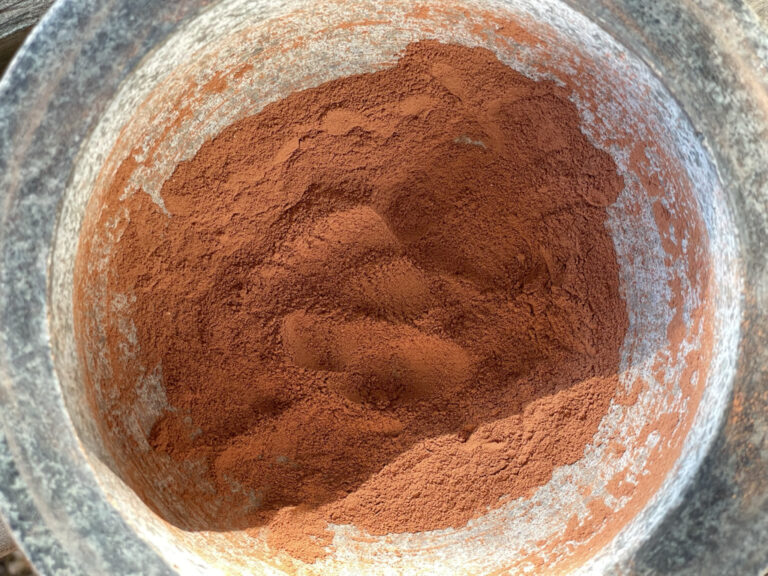Foraged Pigments & Site-Specific Materials /
Foraged Materials in Image-Making /
This page explores how natural materials gathered from the site of the image-making — soil, river water, ash, hay, and more — are integrated into my prints. These foraged pigments connect the image to its place of origin, both physically and conceptually.
Rooted in Place
Where possible, I gather material from the site where I’m photographing or working. That might be a handful of soil, crushed rock, burnt wood, hay from a harvested field, or water drawn directly from a nearby river. These elements are ground, mixed, or rubbed into the surface of the paper — sometimes becoming pigment, sometimes residue, sometimes just memory.
This way of working isn’t about nostalgia or a return to the primitive — it’s about embodiment. The land becomes image. What is photographed is also physically present.
What I Use
-
Earth & Soil: Crushed and sieved to produce ochres, umbers, and raw tones
-
River Water: Used to develop film or dilute solutions — each water source has its own characteristics
-
Ash & Charcoal: From fire or burned plant matter, used as pigment or texture
-
Hay, Clay, Wheat: Rubbed into surfaces or added to gum layers for texture and trace
-
Natural Pigment Binders: Gum arabic, honey, egg, and casein — depending on the material
Process
Pigments are often prepared in small batches using tools I’ve adapted myself. After collecting material from the field, I wash, grind, or boil it depending on what’s needed. The resulting pigments are used with traditional binders or layered into gum bichromate prints, where they interact with hand-coated paper, watercolour pigments, and light-sensitive emulsions.
Sometimes I simply press material into the wet surface of a print. Other times I layer glazes — influenced by the oil painters of the late 15th century — so that the pigment becomes part of the image’s internal logic.
Why Work This Way?
There’s something quiet and slow about this approach. It resists convenience. It requires time. But the prints carry a resonance — a sensory trace of place that’s more than representation.
For me, these processes feel closer to alchemy than photography. They embody the image — its surroundings, its weather, its physical presence.
Related Projects
-
Fractured Whispers — pigments gathered from the Scottish rainforest
-
River Chelmer Project — prints developed using river water and embedded field material
-
A Moment’s Existence — mixed media pieces with layered glazes
Watch the Process
Art-Making with Foraged Pigments
This short film documents part of my working process — from collecting site-specific materials to layering pigments and hand-coating paper. Featuring footage from the making of Fractured Whispers and Gwen, it offers a behind-the-scenes view into the tactile, slow-build approach behind the work.
Filmed in the Scottish Celtic Rainforest, 2024. Part of the Studies in Photography feature.
“Fractured Whispers, by Ian Phillips-McLaren is a masterclass in how artists are turning to a slow way of working. Ian pushes this to a remarkable degree.” — Studies in Photography (Journal)
“There’s a moment when the image and the earth become inseparable — not just in subject, but in substance. It’s no longer a photograph of a place; it’s the place itself, held in emulsion, pigment, and time.”
— Ian Phillips-McLaren

























